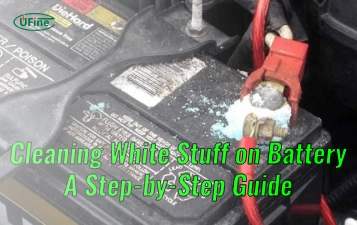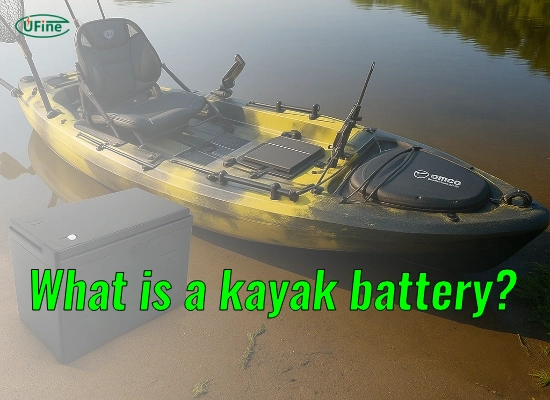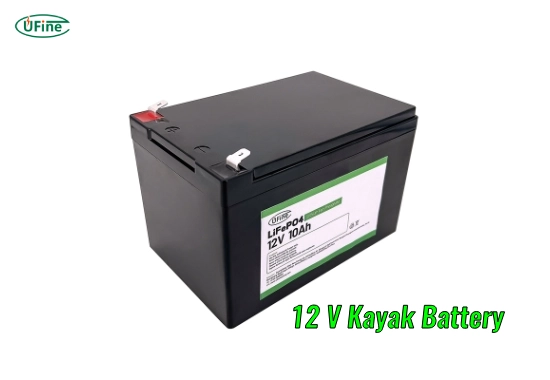Choosing the right kayak battery can feel overwhelming if you’re unsure where to begin. Whether using a fish finder, GPS, or trolling motor, a reliable battery is essential for a successful day on the water. In this guide, we’ll break everything down for you—from the types of batteries available to what specs matter most—so you can make the best choice for your next kayaking adventure.
Part 1. What is a kayak battery?
A kayak battery is a compact power source designed to run various electronic devices onboard. These devices might include:
- Fish finders
- GPS units
- Trolling motors
- Navigation lights
- Phone chargers
Since kayaks are small and space is limited, kayak batteries are made to be lightweight, waterproof, and durable. Unlike car batteries, they are optimised for marine use and constant exposure to water.
Quick Answer: A small, waterproof kayak battery powers electronics like fish finders or trolling motors on your kayak.
Part 2. Why do you need a kayak battery?
You need a kayak battery to power your electronics safely and reliably while on the water. Without one, your fish finder won’t work, your phone might run out of battery, and your lights could fail when needed.
A kayak battery is more than just a convenience—it’s a safety essential.
Part 3. What are the types of kayak batteries?
There are three main types of kayak batteries available today:
1. Sealed Lead-Acid (SLA) Batteries
These are the most affordable and widely used. They’re heavy but reliable.
- Pros: Cheap, easy to find
- Cons: Heavy, slower to charge, shorter lifespan
2. Absorbed Glass Mat (AGM) Batteries
A type of SLA battery but with a better build and longer life.
- Pros: Spill-proof, maintenance-free
- Cons: Still quite heavy
3. Lithium-iron phosphate (LiFePO4) Batteries
These are the lightest and most efficient options.
- Pros: Lightweight, long lifespan, fast charging
- Cons: Expensive
Quick Answer: Lithium batteries are best for most kayakers because they’re light, powerful, and last longer.
Part 4. What size battery do you need for your kayak?
This depends on what you’re powering. The more devices you run and the longer you’re on the water, the larger the battery capacity you’ll need.
Battery capacity is measured in amp-hours (Ah). Here’s a rough guide:
- Fish finder only: 7Ah to 10Ah
- Fishfinder + phone charger: 10Ah to 20Ah
- Trolling motor: 50Ah to 100Ah
Quick Answer: For simple electronics, a 10Ah battery works. For trolling motors, go with 50Ah or more.
Part 5. How long will a kayak battery last?
Battery life depends on:
- The capacity (Ah)
- The power draw of your devices
- The battery type
For example, a 10Ah battery powering a 1-amp fish finder will last roughly 10 hours.
Lithium batteries usually last 5 to 10 years, while SLA batteries last around 2 to 3 years.
Quick Answer: A 10Ah battery can run a fish finder for about 10 hours. Battery lifespan is 2–10 years, depending on the type.
Part 6. What features should you look for in a kayak battery?
When buying a kayak battery, here are the key features to consider:
- Waterproof or water-resistant build
- Lightweight design (especially for portable setups)
- High capacity (measured in Ah)
- Rechargeable and maintenance-free
- Battery Management System (BMS) for lithium batteries
- Safety features: overcharge, overheat, and short-circuit protection
Also, check if it’s compatible with your charger and electronic devices.
Pro Tip: Always choose a battery with more capacity than you need.
Part 7. How do you mount and protect your kayak battery?
You can place your battery in a dry storage hatch, box, or custom mount. Some gear companies also sell waterproof battery bags made for kayaks.
Tips for protection:
- Use waterproof connectors
- Secure battery with straps or Velcro
- Keep it off the floor to avoid water pooling
- Use a fuse to prevent electrical damage
Quick Answer: Use a waterproof battery box and secure it firmly to prevent damage during paddling.
Part 8. What are the best kayak battery brands?
Some popular and trusted brands include:
- Ufine Battery: Known for lightweight, long-lasting lithium options
- Mighty Max: Affordable sealed lead-acid batteries
- Bioenno Power: Great for kayak fish finders
- Renogy: Reliable lithium batteries with solar charging options
- ExpertPower: Compact and efficient LiFePO4 batteries
Pro Tip: Stick with reputable brands to avoid performance issues and safety risks.
Part 9. Can you charge a kayak battery with solar panels?
Yes! Many kayakers use portable solar panels to charge batteries, especially on long trips. Ensure your battery supports solar input, and use a solar charge controller to prevent overcharging.
Solar charging is ideal for:
- Multi-day trips
- Remote fishing spots
- Eco-friendly setups
Quick Answer: Using a solar charge controller, you can charge your kayak battery with solar panels.
Part 10. How do you maintain your kayak battery?
To get the most out of your battery:
- Keep it charged when not in use
- Store in a cool, dry place
- Avoid full discharges (especially for lithium batteries)
- Check for corrosion on terminals
- Use proper chargers designed for your battery type
Quick Answer: Store your battery charged, dry, and cool. Use the correct charger and avoid draining it completely.
Part 11. FAQs about kayak battery
What’s the best kayak battery for fish finders?
A 12V 10Ah lithium battery is ideal for most fish finders. It’s lightweight, compact, and powerful enough for a full day on the water.
Can I use a car battery for my kayak?
No. Car batteries are too heavy, not waterproof, and not designed for small electronics. Use a marine-grade or lithium battery instead.
How do I know when my kayak battery is fully charged?
Most chargers have an LED indicator. Green usually means fully charged. You can also use a voltmeter—12.6V or higher for SLA and 13.6V or higher for lithium, which means full.
Are kayak batteries waterproof?
Not all of them. Check the IP rating or look for waterproof cases. Even water-resistant batteries should be kept dry when possible.
Can I use a lithium battery in saltwater conditions?
Yes, but make sure it’s sealed and rated for marine use. Rinse with fresh water after trips to prevent corrosion.
Related Tags:
More Articles

White Stuff on Battery Terminals: A Step-by-Step Cleaning and Maintenance Guide
White stuff on battery terminals is corrosion. Learn how to clean it safely, prevent damage, and keep your battery running strong with simple steps.
Understanding How Glass Mat Batteries Work: Technology, Benefits, and Limitations
Glass mat batteries power cars, RVs, and solar systems. Learn how they work, their benefits, and what to consider before choosing one.
A Buyer’s Guide for AA Size Lithium Battery
Discover the power of AA size lithium batteries—types, voltage, capacity, and more! Learn how to choose the best one for your needs. Read now!
Li-Ion Battery Prices – Where to Buy Cheap & Safe
Discover li-ion cell prices, key market factors, and how to find affordable custom batteries from top suppliers like Ufine Battery.
How Long Does a 2200mAh Battery Last?
Discover everything about 2200mAh batteries—types, charging time, lifespan, and whether it’s enough for your device.





